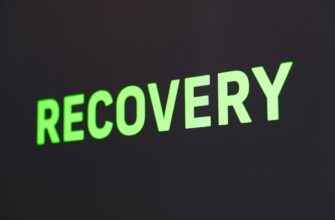💎 USDT Mixer — Your Private USDT Exchange
Mix your USDT TRC20 instantly and securely. 🧩
No sign-up, no data logs — just total privacy, 24/7. ✅
Ultra-low fees starting at just 0.5%.
## Introduction: Why Your Money Needs a Safety NetnnImagine your car breaks down the same week your laptop dies. Without backup funds, this double whammy could spiral into debt or forced borrowing. For beginners, building financial resilience starts with one crucial habit: backing up funds. This isn’t about complex investments—it’s creating accessible cash reserves for life’s surprises. Our guide simplifies the process, helping you start small, avoid common pitfalls, and sleep better knowing you’re prepared.nn## Why Backup Funds Are Non-Negotiable for Financial HealthnnBackup funds (often called emergency funds) act as your financial shock absorbers. Consider these realities:n- **72%** of Americans feel stressed about money (APA study)n- **Unexpected $400 expenses** would force many to borrow or sell assets (Federal Reserve)n- Job losses, medical bills, and urgent repairs strike without warningnnYour backup fund transforms crises from disasters into manageable inconveniences. It prevents debt cycles, protects credit scores, and gives power to say “no” to predatory loans.nn## Top 5 Beginner-Friendly Backup Methods Comparednn### 1. High-Yield Savings Accounts (HYSAs)n- **How it works**: FDIC-insured accounts offering 4-5% APYn- **Best for**: Immediate access; zero riskn- **Ideal amount**: 3-6 months of living expensesnn### 2. Money Market Accounts (MMAs)n- **How it works**: Hybrid accounts with check-writing privilegesn- **Best for**: Higher balances; slightly better rates than HYSAsn- **Watch for**: Minimum balance requirementsnn### 3. Short-Term Treasury Billsn- **How it works**: Government-backed bonds maturing in 4-52 weeksn- **Best for**: Inflation protection; state tax exemptionn- **Minimum**: $100 via TreasuryDirect.govnn### 4. Certificate of Deposits (CDs)n- **How it works**: Lock funds for fixed terms (3-24 months) for higher yieldsn- **Best for**: “Set and forget” savings; penalty discourages dippingn- **Strategy**: Ladder multiple CDs for staggered accessnn### 5. Cash Management Accountsn- **How it works**: Fintech platforms pooling FDIC insurance across banksn- **Best for**: Tech-savvy users; seamless mobile managementnn## Your 6-Step Backup Fund Blueprintnn1. **Calculate Your Target**
Total essential monthly expenses x 3 = Minimum backup fund goal
*(Example: $2,000 rent/food/bills x 3 = $6,000 initial target)*nn2. **Start Micro-Saving**
Automate $20-$50 weekly transfers. Apps like Digit analyze spending to save painlessly.nn3. **Choose Your Account**
Match funds to purpose:
– Immediate emergencies → HYSA
– 6-12 month goals → CD laddernn4. **Build in Layers**
Tier 1: $1,000 in HYSA (urgent access)
Tier 2: Remainder in higher-yield optionsnn5. **Defend Your Fund**
– Never invest backup money in stocks/crypto
– Replenish after withdrawals within 60 daysnn6. **Scale Up Gradually**
Increase savings by 1% monthly until hitting 15% of income.nn## 7 Costly Mistakes Beginners Make (And How to Avoid Them)nn- **Mistake**: Keeping funds in checking accounts
*Fix*: Move to HYSA earning 10x more interestnn- **Mistake”: Overfunding low-access options
*Fix*: Keep 30% in instantly liquid accountsnn- **Mistake**: Ignoring inflation
*Fix*: Use T-bills or inflation-protected securities for portion of fundnn- **Mistake**: No “fund firewall”
*Fix*: Store debit card elsewhere to prevent impulse spendingnn- **Mistake**: Not automating
*Fix*: Set recurring transfers payday-to-savingsnn- **Mistake**: Stopping at 3 months
*Fix*: Gig workers/contractors need 8-12 monthsnn- **Mistake**: Using backups for non-emergencies
*Fix*: Define “emergency” clearly (medical crisis vs. concert tickets)nn## FAQ: Your Backup Fund Questions Answerednn**Q: How much should I save before investing?**
A: Secure 3-6 months of backup funds first. Investing comes after this safety net.nn**Q: Where’s the safest place for my backup cash?**
A: FDIC/NCUA-insured accounts (banks/credit unions). Avoid speculative assets.nn**Q: Can I use credit cards as backup?**
A: Dangerous! High interest turns small emergencies into debt avalanches. Cash is king.nn**Q: What counts as a real “emergency”?**
A: Job loss, essential car/home repairs, medical deductibles—not vacations or upgrades.nn**Q: How fast should I rebuild after using funds?**
A: Prioritize replenishing within 3 months—cut discretionary spending temporarily.nn**Q: Should I include crypto in my backup strategy?**
A: Absolutely not. Volatility makes it unreliable for emergencies.nn## Final Tip: Start Today, Sleep Better TonightnnBuilding backup funds feels overwhelming only until you begin. Open a dedicated HYSA with $50 right now—this single action creates momentum. Remember: Financial security isn’t about having millions; it’s about controlling surprises. By methodically backing up funds, you’re not just saving money—you’re buying peace of mind, one dollar at a time.
💎 USDT Mixer — Your Private USDT Exchange
Mix your USDT TRC20 instantly and securely. 🧩
No sign-up, no data logs — just total privacy, 24/7. ✅
Ultra-low fees starting at just 0.5%.








